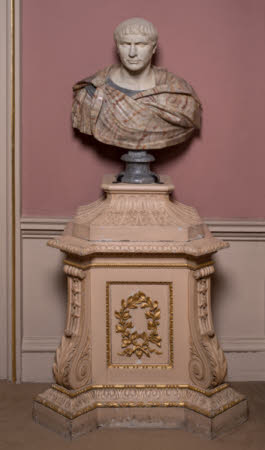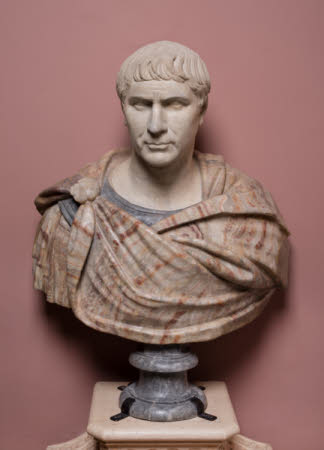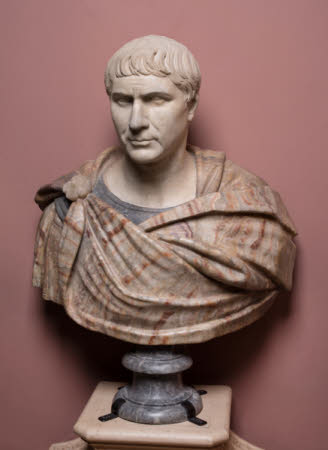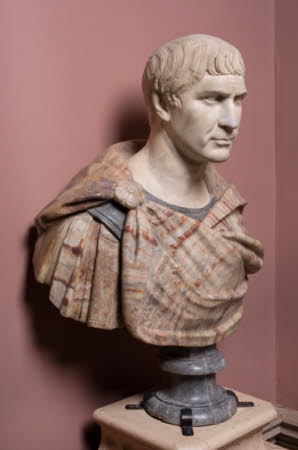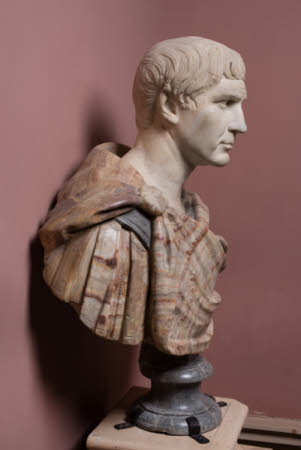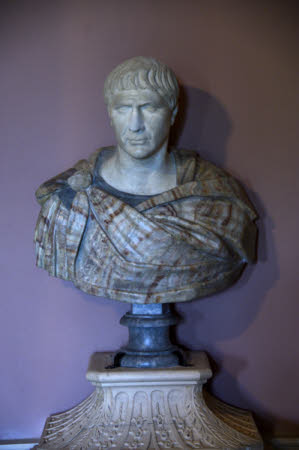Emperor Trajan, Emperor of Rome (53-117 AD)
Italian School
Category
Art / Sculpture
Date
1600 - 1699
Materials
Carrara marble with onyx and yellow polychrome marble on a grey Bardiglio marble socle
Measurements
673 mm (Height)
Place of origin
Italy
Order this imageCollection
Wimpole, Cambridgeshire
NT 2900082
Summary
Carrara marble with onyx and polychrome yellow marble on a grey Bardiglio marble socle, Emperor Trajan (r. 98-117) (after the Antique), Italian School, 17th century. A portrait marble bust of a Roman emperor. The head consists of a carefully transplanted ancient Roman hair and upper face onto a recreated lower face, cleverly re-using a damaged ancient head
Provenance
At Wimpole Hall at least by circa 1777, when the artist-clergyman the Reverend Thomas Kerrich made a brief list of pictures and sculpture in the house, noting ‘4 Antique Busts—one is Caracalla’ in the Gallery; introduced by Philip Yorke, 2nd Earl of Hardwicke, PC, MP, FRS (1720-1790) although they may equally have been acquired by Edward Harley, 2nd Earl of Oxford (1689-1741) who had a strong predilection for antiquities; by descent until sold with the house to Thomas Agar-Robartes, 6th Viscount Clifden, 1894; sold with the house to Captain and Mrs George Bambridge, 1938; sold from Wimpole around 1950; with Collins and Clarke, 81 Regent Street, Cambridge; purchased by Professor Sir Albert Richardson, probably on 25 February 1951; offered for sale at Christie's, King Street, London, 18 september 2013, lot 146 (together with a bust described as of the emperor Galba), remaining unsold; purchased by the National Trust by private treaty with the help of grants from the Art Fund, from a fund set up by the late the Hon. Simon Sainsbury, the Mr and Mrs Kenneth Levy bequest and other gifts and bequests, 2014.
Makers and roles
Italian School, sculptor
References
De Bruijn 2015 Emile de Bruijn et al, 'Acquisitions' in National Trust Historic Houses & Collections Annual (Apollo), 2015, pp. 57 - 66
